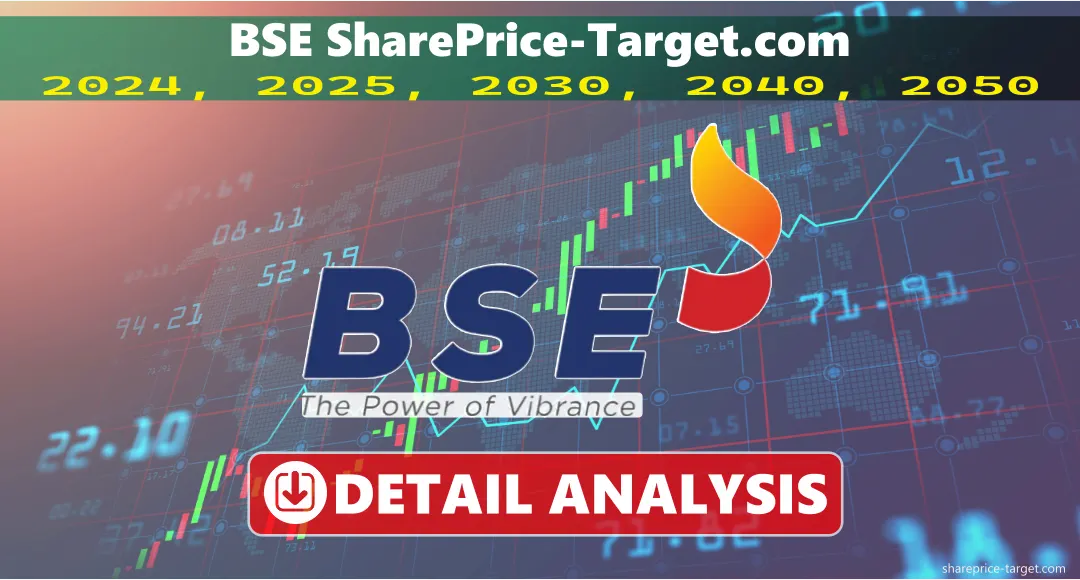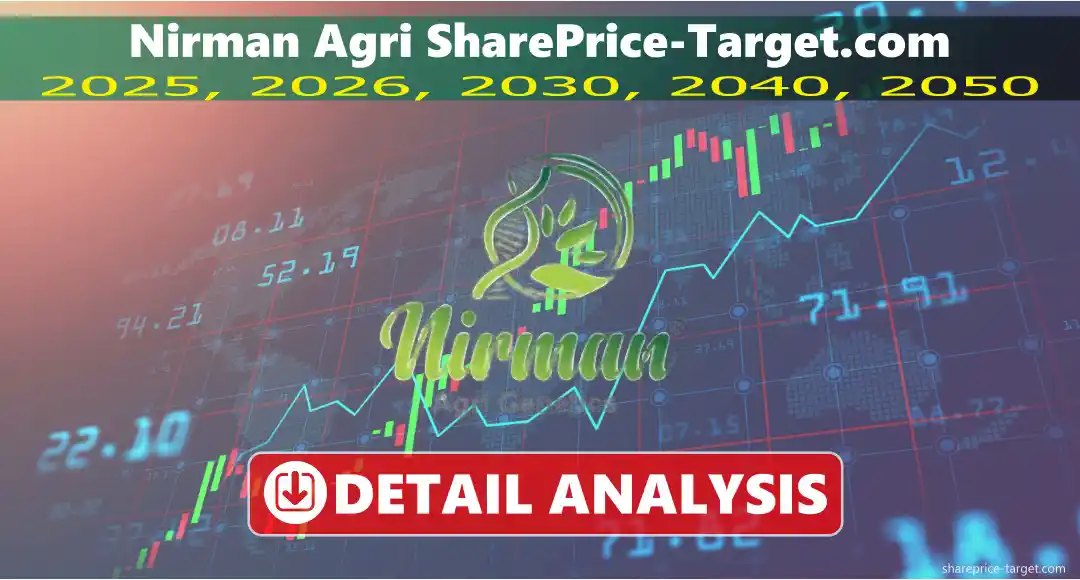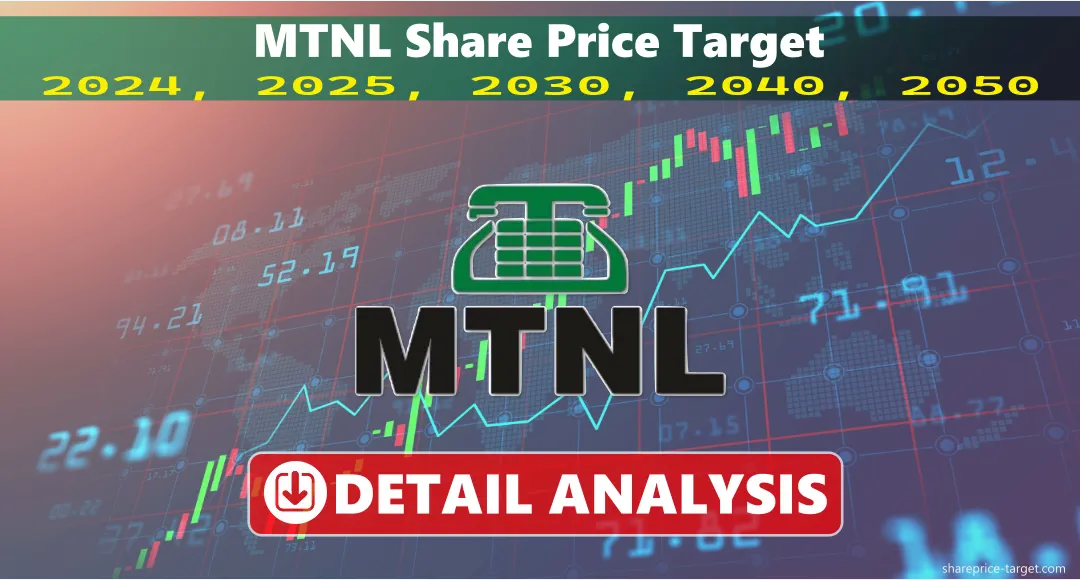बीएसई शेयर मूल्य लक्ष्य 2025, 2026, 2030, 2040, 2050
बॉम्बे स्टॉक एक्सचेंज (BSE) एशिया का सबसे पुराना और भारत का सबसे बड़ा एक्सचेंज है। बीएसई भारत के वित्तीय बाजारों की रीढ़ के रूप में अपनी आर्थिक समृद्धि के लिए महत्वपूर्ण है।
We’ll analyze BSE’s share price projections for the next several years, taking into consideration numerous aspects that might affect its stock performance.
- 1 What is BSE Ltd?
- 2 BSE share price Target Tomorrow
- 3 BSE share price Target 2025
- 4 BSE share price Target 2026
- 5 शेयर मूल्य लक्ष्य 2027
- 6 शेयर मूल्य लक्ष्य 2028
- 7 शेयर मूल्य लक्ष्य 2029
- 8 BSE share price Target 2030
- 9 शेयर मूल्य लक्ष्य 2040
- 10 शेयर मूल्य लक्ष्य 2050
- 11 Should I buy BSE stock?
- 12 बीएसई अर्जित करने का परिणाम
- 13 Expert forecasts on the future of BSE
- 14 Is BSE stock good to buy? (bull case & bear case)
- 15 निष्कर्ष
- 16 पूछे जाने वाले प्रश्न
What is BSE Ltd?
Mumbai-based BSE Ltd. is a major Indian stock exchange. It is the 10th biggest stock exchange by market value and was founded in 1875. BSE allows trading in equities, debt, equity derivatives, currency derivatives, commodity derivatives, interest rate derivatives, mutual funds, and stock lending and borrowing. The business helped build the Indian capital market and led financial technology.
बीएसई वित्तीय सेवाओं के डिजिटलीकरण और खुदरा शेयर बाजार की भागीदारी से लाभ उठा सकता है। प्रौद्योगिकी और नए उत्पाद संगठन के लिए विकास को बढ़ा सकते हैं।
| दिन | न्यूनतम मूल्य (Rs) | अधिकतम मूल्य (Rs) |
| Tomorrow | -160 | +250 |
यह लोगों को स्टॉक, बांड और अन्य वित्तीय उत्पादों को खरीदने और बेचने में मदद करने में महत्वपूर्ण भूमिका निभाता है। भारत की अर्थव्यवस्था बढ़ रही है और अधिक लोग निवेश में रुचि रखते हैं, यह विस्तार जारी रखने के लिए एक मजबूत स्थिति में है। एक्सचेंज तेजी से और अधिक सुरक्षित व्यापार बनाने के लिए अपनी तकनीक का उन्नयन कर रहा है, जो निवेशकों को आकर्षित करने में मदद करता है। ये सुधार, बढ़ती अर्थव्यवस्था के साथ, सुझाव देते हैं कि इसकी शेयर कीमत बढ़ेगी। 2025 में, इसका शेयर मूल्य लक्ष्य होगा ₹3562, हमारे विश्लेषण के अनुसार।
हमारी भविष्यवाणी के अनुसार, इसकी शेयर कीमत के बीच होगी ₹2335 to ₹3562 में (मई - दिसम्बर) 2025।
नोट (23 मई 2025): 2:1 बोनस मुद्दे समायोजन के कारण बीएसई शेयर 66.6% गिर गया, बंद हो गया ₹2,335।
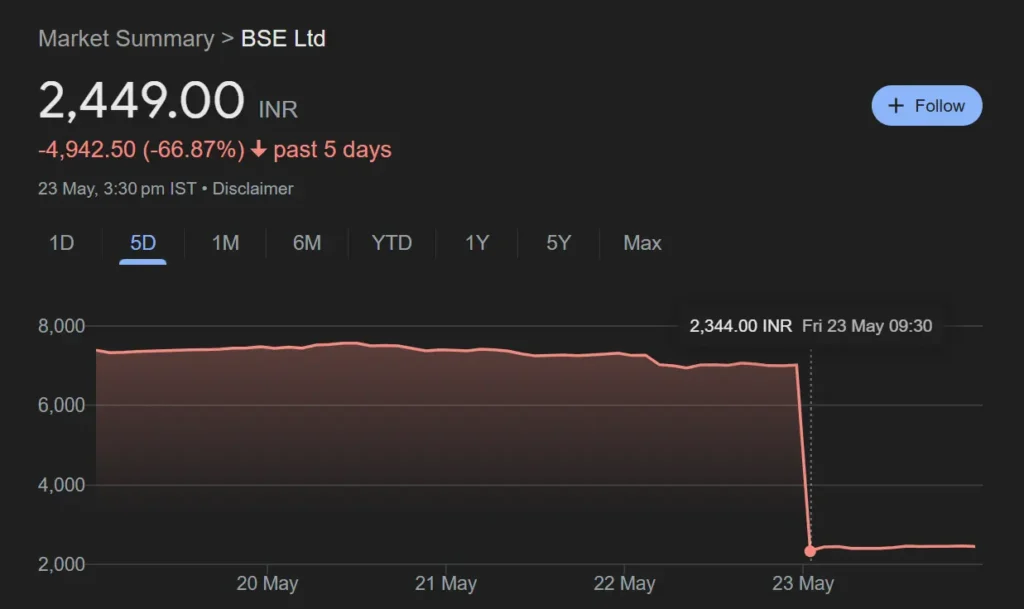
| वर्ष | न्यूनतम मूल्य (Rs) | अधिकतम मूल्य (Rs) |
| (मई - दिसम्बर) 2025 | 2482 | 3562 |
| महीना | न्यूनतम मूल्य (Rs) | अधिकतम मूल्य (Rs) |
| जनवरी | 5023 | 6133 |
| फ़रवरी | 4551 | 6047 |
| मार्च | 3682 | 5534 |
| अप्रैल | 4978 | 6808 |
| मई | 2335 | 2766 |
| जून | 2437 | 2934 |
| जुलाई | 2223 | 2875 |
| अगस्त | 2545 | 3047 |
| सितंबर | 2637 | 3131 |
| अक्टूबर | 2547 | 3245 |
| नवंबर | 2654 | 3334 |
| दिसम्बर | 2738 | 3562 |
2026 में, इसका शेयर मूल्य लक्ष्य होगा ₹6222, हमारे विश्लेषण के अनुसार।
हमारी भविष्यवाणी के अनुसार, इसकी शेयर कीमत के बीच होगी ₹2838 to ₹2026 में 6222।
| वर्ष | न्यूनतम मूल्य (Rs) | अधिकतम मूल्य (Rs) |
| 2026 | 2838 | 6222 |
| महीना | न्यूनतम मूल्य (Rs) | अधिकतम मूल्य (Rs) |
| जनवरी | 2838 | 3447 |
| फ़रवरी | 2874 | 3557 |
| मार्च | 3075 | 3857 |
| अप्रैल | 3327 | 4257 |
| मई | 3587 | 4874 |
| जून | 3247 | 4677 |
| जुलाई | 3895 | 5578 |
| अगस्त | 3768 | 5357 |
| सितंबर | 3785 | 5600 |
| अक्टूबर | 3571 | 5257 |
| नवंबर | 3651 | 5751 |
| दिसम्बर | 3625 | 6222 |
2027 में, इसका शेयर मूल्य लक्ष्य होगा ₹9655, हमारे विश्लेषण के अनुसार।
हमारी भविष्यवाणी के अनुसार, इसकी शेयर कीमत के बीच होगी ₹4325 to ₹2027 में 9655।
| वर्ष | न्यूनतम मूल्य (Rs) | अधिकतम मूल्य (Rs) |
| 2027 | 4325 | 9655 |
2028 में, इसका शेयर मूल्य लक्ष्य होगा ₹14087, हमारे विश्लेषण के अनुसार।
हमारी भविष्यवाणी के अनुसार, इसकी शेयर कीमत के बीच होगी ₹8100 to ₹2028 में 14087।
| वर्ष | न्यूनतम मूल्य (Rs) | अधिकतम मूल्य (Rs) |
| 2028 | 8100 | 14087 |
2029 में, इसका शेयर मूल्य लक्ष्य होगा ₹26633, हमारे विश्लेषण के अनुसार।
हमारी भविष्यवाणी के अनुसार, इसकी शेयर कीमत के बीच होगी ₹18756 to ₹2029 में 26633।
| वर्ष | न्यूनतम मूल्य (Rs) | अधिकतम मूल्य (Rs) |
| 2029 | 18756 | 26633 |
2030 में, इसका शेयर मूल्य लक्ष्य होगा ₹हमारे विश्लेषण के अनुसार 43009।
हमारी भविष्यवाणी के अनुसार, इसकी शेयर कीमत के बीच होगी ₹35124 to ₹2030 में 43009।
| वर्ष | न्यूनतम मूल्य (Rs) | अधिकतम मूल्य (Rs) |
| 2030 | 35124 | 43009 |
| महीना | न्यूनतम मूल्य (Rs) | अधिकतम मूल्य (Rs) |
| जनवरी | 35124 | 36865 |
| फ़रवरी | 35741 | 37357 |
| मार्च | 36000 | 37574 |
| अप्रैल | 36217 | 37845 |
| मई | 36674 | 38000 |
| जून | 36890 | 38247 |
| जुलाई | 37254 | 38845 |
| अगस्त | 37687 | 39658 |
| सितंबर | 38257 | 40248 |
| अक्टूबर | 39004 | 41027 |
| नवंबर | 39874 | 42324 |
| दिसम्बर | 41578 | 43009 |
2040 में, इसका शेयर मूल्य लक्ष्य होगा ₹82652, हमारे विश्लेषण के अनुसार।
हमारी भविष्यवाणी के अनुसार, इसकी शेयर कीमत के बीच होगी ₹75162 to ₹2040 में 82652।
| वर्ष | न्यूनतम मूल्य (Rs) | अधिकतम मूल्य (Rs) |
| 2040 | 75162 | 82652 |
भारत एक महत्वपूर्ण वैश्विक वित्तीय केंद्र बन गया है। नवाचार पर एक्सचेंज का चल फोकस और इसके व्यापार प्लेटफार्मों में सुधार यह सुनिश्चित करेगा कि यह प्रतिस्पर्धी रहता है। इसके अलावा, भारत में शेयरों और बांडों में निवेश करने वाले लोगों की बढ़ती संख्या के साथ, देश की अर्थव्यवस्था में इसकी भूमिका का विस्तार जारी रहेगा। ये सभी कारक अपने शेयर मूल्य को बढ़ा सकते हैं। 2050 में, इसका शेयर मूल्य लक्ष्य होगा ₹125862, हमारे विश्लेषण के अनुसार।
हमारी भविष्यवाणी के अनुसार, इसकी शेयर कीमत के बीच होगी ₹116644 to ₹2050 में 125862।
| वर्ष | न्यूनतम मूल्य (Rs) | अधिकतम मूल्य (Rs) |
| 2050 | 116644 | 125862 |
Should I buy BSE stock?
| वर्ष | न्यूनतम मूल्य (Rs) | अधिकतम मूल्य (Rs) |
| 2025 | 2335 | 3562 |
| 2026 | 2838 | 6222 |
| 2027 | 4325 | 9655 |
| 2028 | 8100 | 14087 |
| 2029 | 18756 | 26633 |
| 2030 | 35124 | 43009 |
| 2040 | 75162 | 82652 |
| 2050 | 116644 | 125862 |
बीएसई स्टॉक खरीदने से पहले कई विचार किए जाने चाहिए। भारतीय वित्तीय बाजारों में कंपनी की मजबूत उपस्थिति के साथ-साथ भारत की विकासशील अर्थव्यवस्था और वित्तीयकरण ने विकास का सुझाव दिया। बढ़ती व्यापार की मात्रा और बाजार भागीदारी के साथ, बीएसई एक ठोस व्यापार रणनीति और लगातार वित्तीय सफलता है।
Investors may also consider legislative changes, technological upheavals, and exchange competition. The stock’s value should be compared to industry peers to meet market expectations. Long-term success depends on the company’s capacity to innovate and adapt to market changes.
Your financial objectives, risk tolerance, and research should determine your investment selection. Consult a financial counsellor before investing.
बीएसई अर्जित करने का परिणाम
BSE Ltd. has shown sustained financial progress in recent years. The company’s profitability has risen due to operational efficiency and product expansion. Summary of BSE’s recent financial results:
| तिमाही | Revenue (₹ Crores) | Net Profit (₹ Crores) | EPS (₹) |
| Q2 FY24 | 287.68 | 118.45 | 8.76 |
| Q1 FY24 | 221.35 | 87.46 | 6.46 |
| Q4 FY23 | 194.67 | 77.32 | 5.71 |
| Q3 FY23 | 193.15 | 51.55 | 3.81 |
Expert forecasts on the future of BSE
बीएसई लिमिटेड, एशिया का पहला स्टॉक एक्सचेंज रणनीतिक पहल और ठोस वित्तीय प्रदर्शन के कारण तेजी से विकसित होने की भविष्यवाणी करता है। विश्लेषकों ने मूल्य उद्देश्य की भविष्यवाणी की ₹2024 के लिए 4,100 और ₹2030 तक 15,800, जो एक मजबूत दीर्घकालिक पूर्वानुमान का संकेत देता है। विनिमय की त्रैमासिक राजस्व और शुद्ध लाभ वर्ष से अधिक बढ़ गया, इसकी परिचालन दक्षता और बाजार की ताकत का प्रदर्शन।
BSE’s focus on boosting derivatives and commodities products and technology advancements positions it to attract more investors. Zero debt and a 23.57% ROE reflect the company’s strong fundamentals. Analysts are optimistic about BSE Ltd.’s prospects, despite regulatory uncertainties and market participation slowdowns.
Is BSE stock good to buy? (bull case & bear case)
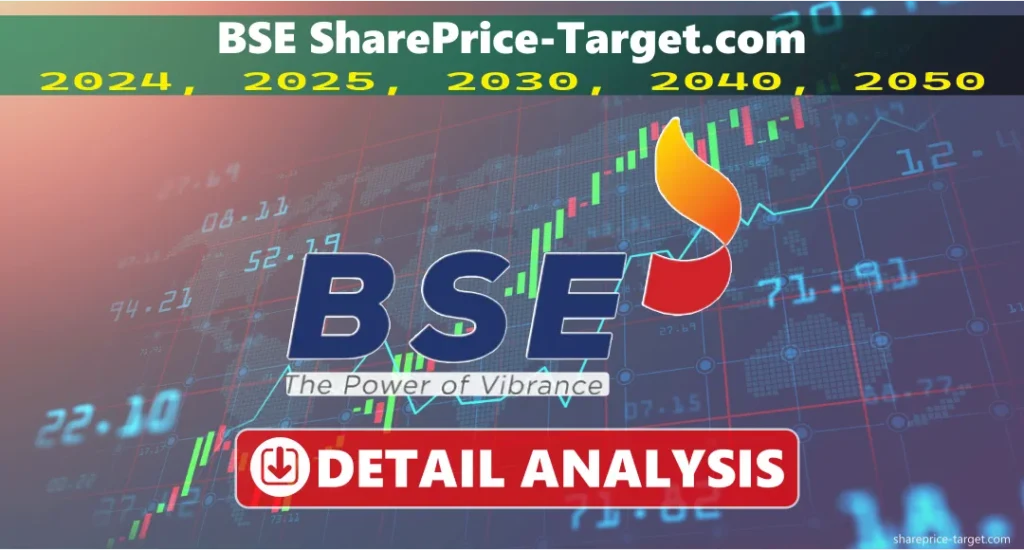
बुल केस:
- Strong market position as Asia’s oldest stock exchange
- Growth in trade volumes and consistent financial success
- Enhancing operational efficiency using technology
- Diversification offers new income sources.
- India’s growing economy and increasing financialization
भालू का मामला:
- Regulatory risks and market restructuring
- Exchanges and alternative trading platforms compete.
- Trading volume and market volatility dependence
- Potential global economic uncertainty effect
- Challenges of staying ahead in fintech’s fast evolution
निष्कर्ष
BSE Ltd is an intriguing investment in India’s fast-growing financial industry. Investors hoping to profit from India’s economic growth would like the company’s strong market position, consistent financial performance, and growth prospects. Like any investment, it has risks and uncertainties.
BSE has a good long-term prognosis, but investors should examine their investment objectives, risk tolerance, and the economy before investing. As usual, portfolio risk management requires diversification and a well-rounded investing approach.

